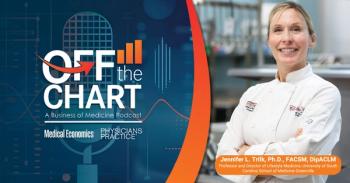
NPs and PAs are Joining Docs in Specialty Care
Advanced practitioners are the ones who are supposed to solve the primary-care physician shortage problem. But are they moving to specialties too?
It's no secret that a lot of doctors fresh out of medical school are going into subspecialties, which often means similar hours but higher pay than primary-care physicians, according to results from Physicians Practice's Physician Compensation and Great American Physician surveys. The Great American Physician survey revealed that most physicians - specialty or not - work between 41 hours and 60 hours per week. The Physician Compensation Survey indicated that 13 percent of specialty physicians earned more than $450,001 in annual income, whereas only 3.7 percent of primary-care doctors brought in that kind of income. The shortage of primary-care physicians will only worsen over time if this trend continues. Hence, physician assistants (PAs) and nurse practitioners (NPs) have been looked at by many - including HHS' Health Resources and Services Administration - as a potential way to solve this problem.
But what if PAs and NPs themselves are going into specialties? This is a trend, according to many experts. "I've seen the trend with my subspecialty [physician] colleagues to have nurses and PAs work with them. We did a survey and 50 percent of our members are working with NPs and 40 percent with PAs. That's our specialty-specific numbers," says Reid Blackwelder, a family medicine physician, and past president of the American Academy of Family Physicians (AAFP), and professor of family medicine at the Quillen College of Medicine at East Tennessee State. University. AAFP's Robert Graham Center, a non-profit research firm that focuses on improving primary-care at a population health level, used data from the National Provider Identifier file and found that only 43.2 percent of PAs and 52.4 percent of NPs work in primary care.
Stephen Hanson, a physician assistant in Bakersfield, Calif., practicing in plastic and reconstructive surgery, has also seen the trend of large numbers of PAs working in specialty care. "When I graduated in 1981 … we largely came from a primary-care profession to now [a large] percent of PAs work in specialty care. It's been a dramatic shift of where PAs are being deployed," he says.
Hanson says because of the ways PAs are trained, they can switch specialties fairly easily. He says he has been in six specialties throughout his 34-year career.
On the other side, the vast majority of NPs are trained in primary care. A survey from the Henry J. Kaiser Family Foundation indicates that approximately 90 percent of NPs have this kind of background. However, according to Cindy Cooke, president of the American Association of Nurse Practitioners (AANP), and a former family medicine nurse practitioner at Fox Army Health Center in Huntsville, Ala., there are many NPs going into specialty care. Elizabeth Seymour, a family medicine physician at the Medical Associates of Denton, Texas, who employs three NPs in her practice, confirms that trend.
"NPs fit in, especially in primary care, but what I'm seeing though is many are specializing. They're going to work for gastroenterologists, orthopedic surgeons, neurosurgeons, or working in the ER. They fit in everywhere as long as it helps out the physician," says Seymour.
The principal reason that specialization is on the rise for advanced practitioners is likely the same reason fewer doctors are entering primary care: money. According to a survey from the American Academy of Physician Assistants, which surveyed 10,000 of its members across a variety of specialties on their salaries, PAs in dermatology ($117,000), emergency medicine ($108,000) and surgery ($105,000) have a higher median salary than those in primary care ($94,000) and family medicine ($93,400).
Newsletter
Optimize your practice with the Physicians Practice newsletter, offering management pearls, leadership tips, and business strategies tailored for practice administrators and physicians of any specialty.








